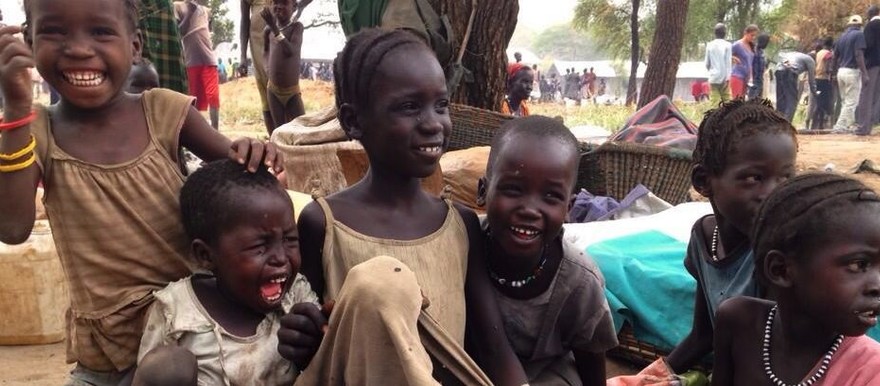South Sudan crisis: Key humanitarian updates

The humanitarian organizations working in South Sudan have continued over the last week providing food, vaccinations, clean water, health care and other services to some of the nearly one million displaced people within the country.
OCHA, the UN Office for the Coordination of Humanitarian Affairs, yesterday released a situation report covering the period 18 to 25 April. The information below represents a selection of highlights from the report:
Heavy fighting broke out in the northern parts of Upper Nile State on 23 April, especially Renk County. Unconfirmed reports suggested that some 30,000 - 40,000 displaced people are heading towards Melut fleeing fighting.
Aid agencies scaled up their response in Bentiu, where the number of people seeking shelter swelled from 8,000 on 15 April to approximately 22,500 on 24 April. This has resulted in overcrowding and water shortages.
The UN Tomping site in Juba is still over-congested, limiting space for installation of latrines, health and education facilities. The UN is supporting ‘community mobilization activities’ to encourage people to move from the over-congested Tomping base to UN House.
Food airdrops were carried out in Jonglei, Upper Nile, and Unity states. During the week, the Logistics Cluster facilitated the airlift of 75 metric tons of humanitarian supplies to Akobo, Bentiu, Ganyiel, Malakal, and Mayendit. Increasing difficulties in moving supplies overland are expected to make more airlifts unavoidable as the rains limit road access.
Riverine deliveries are currently ongoing to Ulang in Upper Nile. However, barge movements to Bor and Malakal are on hold due to insecurity.
Crop kits (maize, cowpea and sorghum) for 10,286 families, vegetable kits for 9,300 families and fishing kits for 2,000 families were delivered to Torit in Eastern Equatoria.
344,557 children were screened for acute malnutrition (including 3,889 last week) since January. 17,685 children (5.1 per cent) were identified with severe acute malnutrition (SAM) and 41,564 (12.4 per cent) with moderate acute malnutrition (MAM).
From January to date, 69,771 pregnant and lactating women (PLW) were screened for acute malnutrition and 20,047 (28.7 per cent) were identified with acute malnutrition (MUAC less than 23,0cm). 6,677 PLW women were admitted to acute malnutrition treatment programmes.
102 unaccompanied, separated and missing children have been reunified since December 2013.
In Ganyiel, Unity Sate, a distribution of household items was completed this week to 2,490 families. People sheltering in the three displacement sites in Melut, Upper Nile have also received household items. In Rom, Upper Nile, a distribution of household items continued to 500 newly arrived families.
Photo 1: South Sudanese refugee children in western Ethiopia (UNHCR)
Photo 2: IDP figures per state for the states with largest displaced populations, 25 April 2014 (OCHA)
Related coverage: